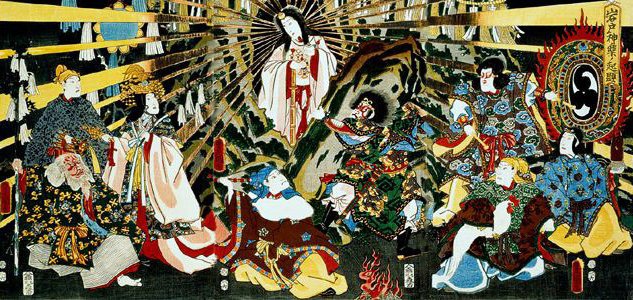|
In for example the Swedish and German languages sun
is feminine in gender, while the moon is male (German: die Sonne
/ der Mond). The Inuit peoples also consider sun to be
female (the sister of the male moon). In Japan the sun god,
Amaterasu, '(that which) illuminates Heaven', is female (ref. Larousse).
Picture from Wikipedia:
My use of 'he' for the sun and 'she' for the moon is influenced by Polynesian views, where Tane definitely is a male god and Hina equally clearly is female. Though Hina may once have meant 'the shining one' referring to the sun:
However, in no sense do I wish to suggest that the glyphs we find in the rongorongo texts define the 'persons' according to sex (or gender). |
